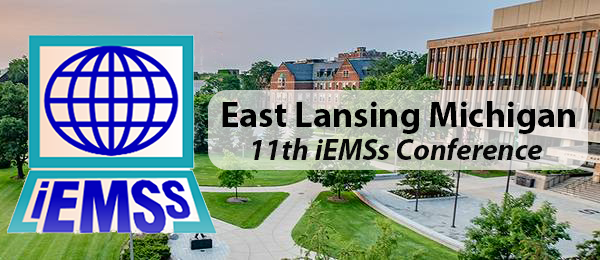Keywords
Inter-model comparison; hypoxia; primary production and respiration; nutrient load reduction; Gulf of Mexico
Start Date
5-7-2022 12:00 PM
End Date
8-7-2022 9:59 AM
Abstract
Complex simulation models are a valuable tool to inform nutrient management decisions aimed at reducing hypoxia in the northern Gulf of Mexico, yet simulated hypoxia response to reduced nutrients varies greatly between models. We compared two biogeochemical models driven by the same hydrodynamics, the Coastal Generalized Ecosystem Model (CGEM) and Gulf of Mexico Dissolved Oxygen Model (GoMDOM), to investigate how they differ in simulating hypoxia and their response to reduced nutrients. Different phytoplankton nutrient kinetics produced 2-3 times more hypoxic area and volume on the western shelf in CGEM compared to GoMDOM. Reductions in hypoxic area were greatest in the western shelf, comprising 72% (~4,200 km2) of the total shelfwide hypoxia response. The range of hypoxia responses from multiple models suggests a 60% load reduction may result in a 33% reduction in hypoxic area, leaving an annual hypoxic area of ~9,000 km2 based on the latest 5-yr average (13,928 km2). Our results indicate that uncertainty derived from the selection of model formulations can alter the predictive outcomes of complex simulation models, thus presenting risk of misinforming management decisions. This study highlights the importance of multiple model evaluation in the context of reducing ambiguity and increasing confidence in process-based model simulations for environmental management decision making.
Inter-model comparison of simulated Gulf of Mexico hypoxia in response to reduced nutrient loads: effects of phytoplankton and organic matter parameterization
Complex simulation models are a valuable tool to inform nutrient management decisions aimed at reducing hypoxia in the northern Gulf of Mexico, yet simulated hypoxia response to reduced nutrients varies greatly between models. We compared two biogeochemical models driven by the same hydrodynamics, the Coastal Generalized Ecosystem Model (CGEM) and Gulf of Mexico Dissolved Oxygen Model (GoMDOM), to investigate how they differ in simulating hypoxia and their response to reduced nutrients. Different phytoplankton nutrient kinetics produced 2-3 times more hypoxic area and volume on the western shelf in CGEM compared to GoMDOM. Reductions in hypoxic area were greatest in the western shelf, comprising 72% (~4,200 km2) of the total shelfwide hypoxia response. The range of hypoxia responses from multiple models suggests a 60% load reduction may result in a 33% reduction in hypoxic area, leaving an annual hypoxic area of ~9,000 km2 based on the latest 5-yr average (13,928 km2). Our results indicate that uncertainty derived from the selection of model formulations can alter the predictive outcomes of complex simulation models, thus presenting risk of misinforming management decisions. This study highlights the importance of multiple model evaluation in the context of reducing ambiguity and increasing confidence in process-based model simulations for environmental management decision making.



Stream and Session
false